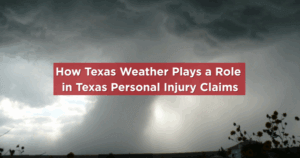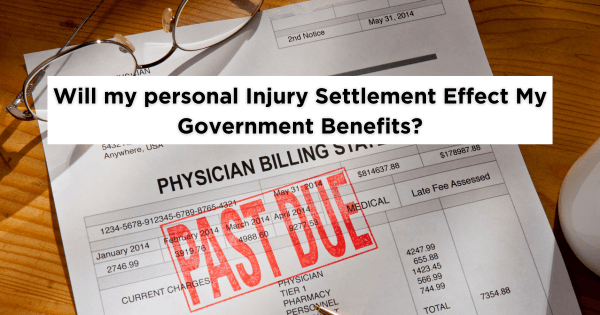
From heavy rain to icy sidewalks, Texas weather can create dangerous conditions that lead to personal injury claims.
Texas weather is anything but predictable. From spring thunderstorms to icy winter mornings and even the occasional hurricane, our state’s climate can create dangerous conditions that lead to serious injuries. When someone is hurt because a property owner failed to address these hazards, a personal injury claim may arise under premises liability law.
In this article, we’ll break down how Texas weather contributes to personal injury claims, the duties of property owners, and what victims need to know if they’re injured due to rain, ice, or storm debris or damage.
Understanding Premises Liability in Texas
Premises liability is a legal theory that holds property owners and occupiers responsible for injuries caused by unsafe conditions on their property. The injured party (known as the “invitee,” “licensee,” or sometimes “trespasser”) must show that the owner:
- Knew or should have known about the hazardous condition,
- Failed to correct or adequately warn about it, and
- That failure caused the injury.
Weather-related hazards fall squarely under this framework — but proving liability can be tricky, especially when storms or ice are involved.
Common Weather-Related Hazards in Texas
1. Rain and Standing Water
Rain may seem harmless, but it can quickly create dangerous slip-and-fall conditions. Smooth surfaces like tile, polished concrete, or wood decks become slick when wet.
- Examples: Wet grocery store aisles after customers track in rainwater, slippery entry mats, or puddles near entrances.
- Owner’s duty: Businesses must mop floors, place caution signs, and use non-slip mats when they know customers are likely to bring water inside.
Tip: Photographs of the scene immediately after a fall can be powerful evidence of negligence.
2. Ice and Snow
While ice storms are less frequent in Texas than in northern states, freezing precipitation can paralyze entire cities. Sidewalks, parking lots, and stairs become treacherous during sleet or snow events.
- Examples: Black ice in shopping center parking lots, untreated apartment walkways, or icy office steps.
- Owner’s duty: If an owner knows ice is present or reasonably should know (for example, after a forecasted storm), they must take reasonable steps like salting, sanding, or blocking off dangerous areas.
Courts recognize that it’s not always possible to clear ice immediately, but an owner’s response must be reasonable given the circumstances.
3. Storm Debris/Damage and Wind Hazards
Texas is no stranger to high winds, hail, and hurricanes. After a storm, broken tree limbs, fallen signs, or scattered debris can injure visitors.
- Examples: A customer trips over storm branches in a parking lot, or a loose roof tile falls and causes a head injury.
- Owner’s duty: Once the storm passes, property owners are expected to inspect and remove hazards in a timely manner.
Challenges in Proving Weather-Related Claims
Weather creates a unique defense for property owners: the “act of God” doctrine. If a hazard is caused by sudden, uncontrollable weather — and the owner had no reasonable opportunity to fix it — they may avoid liability.
Key factors courts consider:
- How long the hazard existed before the accident.
- Whether weather reports warned of dangerous conditions.
- Whether the owner made reasonable efforts (clean-up crews, warning signs, barriers).
This is why prompt investigation and documentation are essential for injured parties.
Steps to Take After a Weather-Related Injury
If you’re hurt because of rain, ice, or storm debris, you can protect your claim by:
- Seeking medical attention immediately to document your injuries.
- Reporting the incident to the property owner or manager.
- Taking photos and videos of the hazard and surrounding area.
- Collecting witness names and contact info if anyone saw the accident.
- Consulting an experienced personal injury attorney as soon as possible.
How an Attorney Can Help
A skilled attorney can:
- Investigate weather data, maintenance logs, and security footage.
- Identify all responsible parties (property owner, management company, contractors).
- Work with experts to show how long the hazard existed and whether the owner acted reasonably.
- Negotiate with insurers or take the case to trial if necessary.
Final Thoughts
Texas weather may be unpredictable, but property owners still have a duty to protect visitors from foreseeable hazards like rainwater, icy walkways, and storm debris. If you or someone you love has been injured due to unsafe conditions after bad weather, don’t wait to get help.
Contact our firm today for a free consultation. We’ll evaluate your case, gather evidence, and fight for the compensation you deserve.










